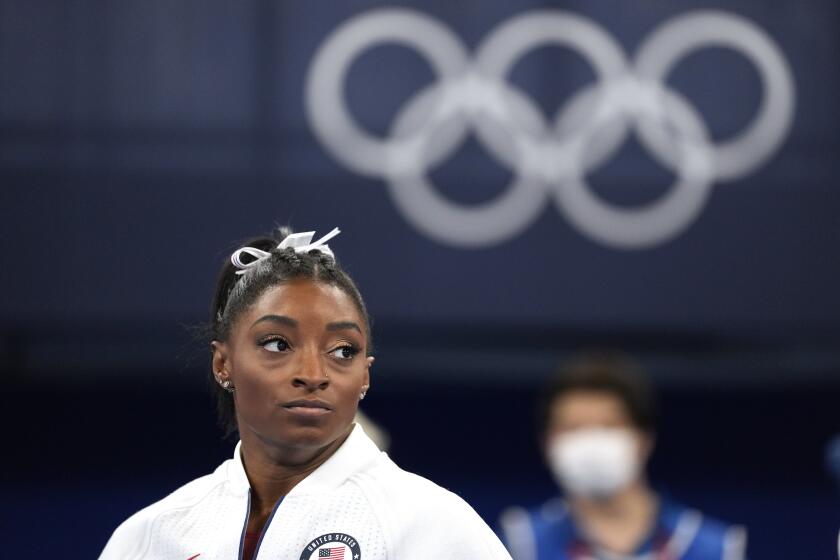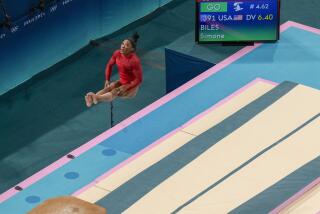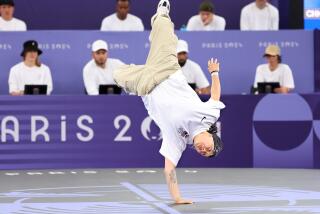Who are Sunisa Lee and Jade Carey? Meet Team USA’s all-around competitors
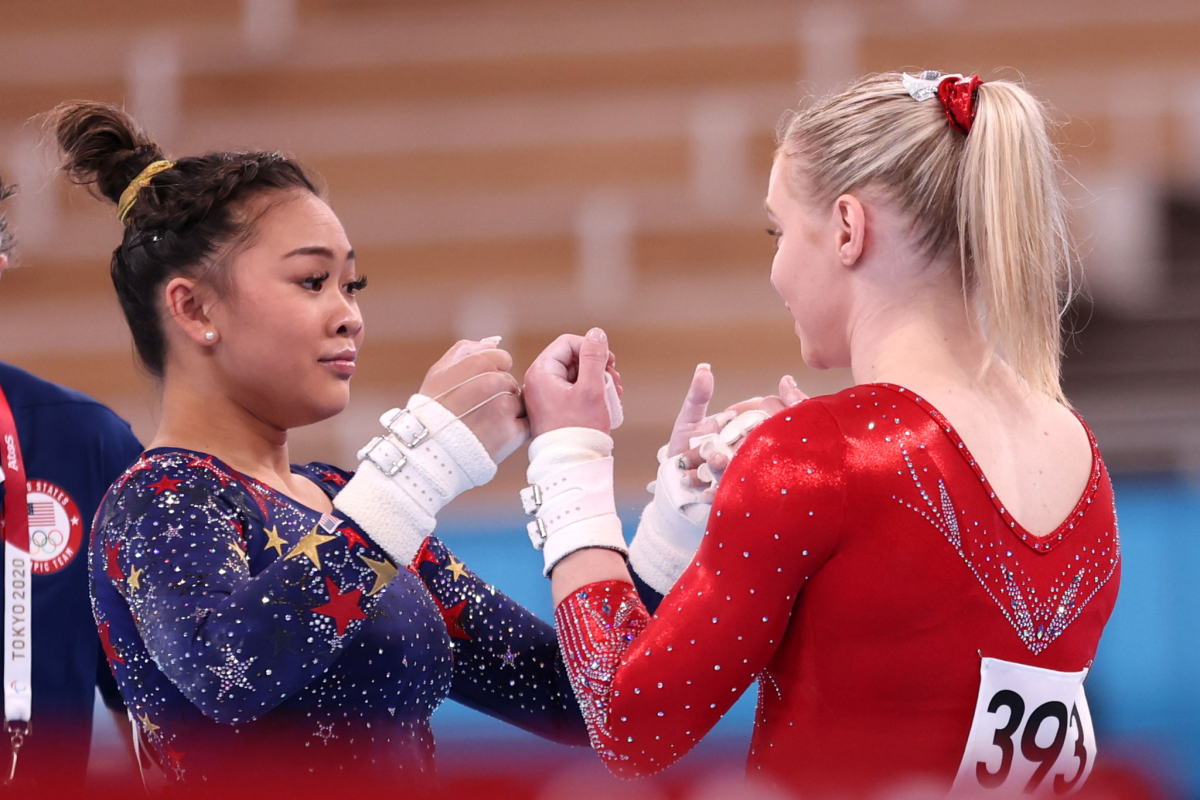
- Share via
Simone Biles has made a name for herself by rewriting the international code of points with increasingly difficult skills that bear her name, but with the greatest of all time out of Thursday’s all-around final, don’t sleep on Sunisa Lee and Jade Carey.
Lee, 18, is a star uneven bars worker who packs seven release skills into her routine. By connecting almost all of them, she banks critical bonus points that add up to the most difficult bar set in the world.
Not to be outdone, the 21-year-old Carey could debut a new skill on floor. If she completes her triple-double layout — three twists and two flips with her body in a straight position — the skill would be named after her in the code of points and have the highest difficulty of any floor skill in women’s gymnastics.
U.S. gymnast Simone Biles pulls out of two events at the Tokyo Olympics because of mental health issues. Other athletes understand the struggle.
The trend-setting pair will carry the U.S. torch in the individual all-around after Biles withdrew to focus on her mental health. Although Biles was considered the overwhelming favorite to win the individual all-around crown, Team USA is still in contention to win its fifth straight Olympic gold medal in the women’s all-around with Lee and Carey.
Lee finished third in qualifying after a less-than-perfect meet in which she missed a connection on bars that could have added two-10ths to her score. She was 0.233 points behind second-place qualifier Rebeca Andrade of Brazil.
Lee delivered her fully loaded bars routine in the team final this week, scoring a 15.4 that highlighted Team USA’s silver medal-winning performance. It was the highest score of the meet and helped settle the team after Biles’ emotional decision to sit out.
To those who know the Minnesota native, seeing her step up wasn’t a surprise.
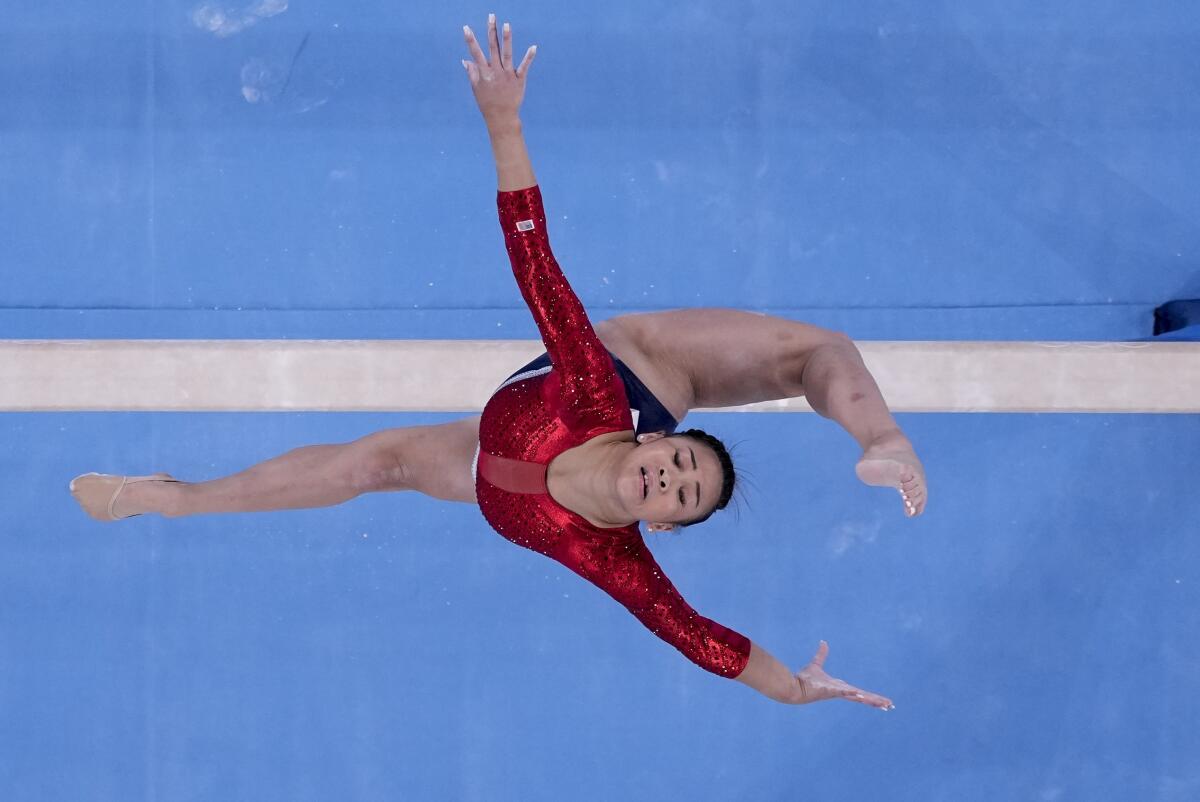
“She’s just a leader,” said Auburn gymnastics coach Jeff Graba, who will coach Lee this fall. “She’s somebody who is fully capable of handling pressure. This is not the first time Suni’s been under tremendous pressure.”
In 2019, Lee competed in the U.S. championships just days after her father was left paralyzed after falling off a ladder. She won gold on bars, then helped the United States to the world team championship a month later while winning silver on floor and bronze on bars.
This year, Lee finished second to Biles in the all-around at the Olympic trials to become the first Hmong American to compete in the Olympics.
Carey didn’t have to wait for the Olympic trials to secure her spot in Tokyo as she clinched her spot as an individual through the Apparatus World Cup Series in April 2020. Her scores didn’t contribute to Team USA’s team total during qualifying, but she excelled in the biggest meet of her life, in which she put together four solid performances while other American gymnasts struggled. Her 15.166 vault score even bested Biles’ score in qualification and placed second overall after Andrade.
“That’s what’s amazing about Jade,” said Oregon State gymnastics coach Tanya Chaplin, who will coach Carey this fall. “She seems to really keep her composure. She’s just steady.”
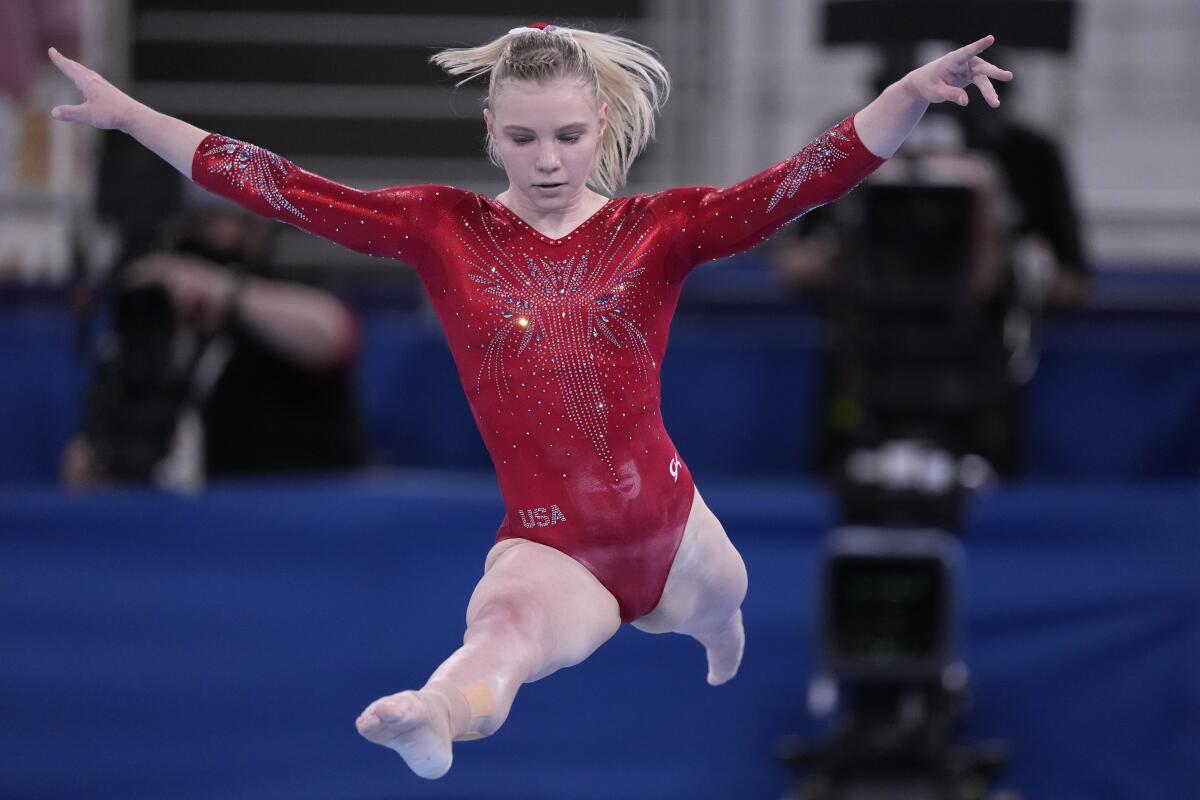
Carey finished ninth in qualifying but was left out of the 24-person all-around final because no more than two gymnasts per country are allowed to compete in an individual final. Without Biles, who finished first qualifying, Carey was promoted to the final.
Carey’s emergence as an all-around threat comes after years of being known more as a floor and vault powerhouse. She has gradually added more difficulty to her bars and beam routines and finished 20th and 41st in those events, respectively, in qualifying.
“It’s just fun to watch how she grows each year,” Chaplin said.
Chaplin has kept her eye on Carey for years. The Arizona native committed to Oregon State seven years ago then signed her national letter of intent in 2017. But she deferred her enrollment until after the Olympics, settling for remote classes during the pandemic.
With Carey’s long-winding Olympic journey almost over, Chaplin is eager to get the incoming freshman on campus but is happy to wait a few more weeks.
“First thing’s first,” Chaplin said, “we’ll just focus on the Olympic Games.”
More to Read
Go beyond the scoreboard
Get the latest on L.A.'s teams in the daily Sports Report newsletter.
You may occasionally receive promotional content from the Los Angeles Times.

